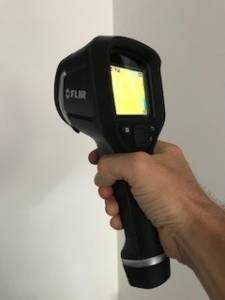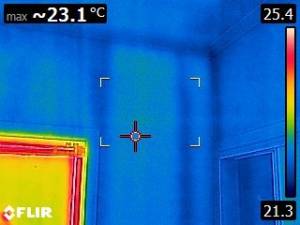Keep Your Home Safe Check It Yourself
The best way to keep your most valuable asset your home safe from termites is to do regular checks. But what are we looking for you may ask, that’s easy we’re looking for termites.
Termites do a tremendous amount of damage to homes and other buildings each and every year. Most of the damage could easily be either reduced or stopped just by doing an inspection.
Now I’m not saying go ahead and just rely on your own termite inspection that would be wrong. What I’m saying is between your regular inspections do some checks yourself. Getting to know your home understand how to check for termites, as this could end up saving you a small fortune down the track.
Termites can attack a home without any external signs what so ever, they can gain entry via a gap as small as a 1mm. This is why every area that can be accessed around a home needs to be inspected.


This is the damage termites can cause.
How Often Should A Home Be Inspected For Termites
So how often a home should be checked for termite activity, this is a question asked a lot by homeowners. There are a few different answers and it comes down to two things, active barrier treatment and environment.
Termite Barrier
When a regular termite inspection is carried out the technician will check to see if an active barrier is installed around the property. If there is no barrier, protecting the home then more regular inspections will be recommended.
Let’s face it if a structure isn’t being protected by some means of a termite barrier then it’s more susceptible to termite attack. So to try and eliminate termites from gaining access, more inspections are needed.
Now if a termite barrier is installed the inspections can go to yearly, because the house has a better chance against termites.
Environment
The environment in which a home is situated will greatly depend on the time recommended between inspections.
If a home is set in a rural area and has a lot of susceptible trees around it or close by, more regular termite inspection will be recommended.
In the situation where a home has no barrier installed and is also located in a high-risk area for termites, 3 to 6-month inspection could be recommended.
The more regular inspections are carried out the less chance there is of serious damage occurring. To help keep termites out and your home safe the following tips should help.


Checking Your Home
External
Look for wood on the ground around the home or wood leaning against the external walls. All wood should be removed from the site and never left next to external walls.
Look for mud trials leading into weep-holes or cracks in brickwork. Mud trails are a definite sign of termite activity and if left untreated can be the start of a serious problem.
Make sure that all Air-conditioning condensing pipes and hot-water system overflow pipes are connected to an adequate drain. If these pipes are left to drain close to the footings they will create moisture. Remember termites need moisture to survive and they’ll take advantage of any easy water source.
Look for nests in trees or mounds in the ground; this could be a sign of a termite colony on the attack. To keep your home free of termites and safe thorough inspections are required so don’t rush them.


Professional Inspectors Use Thermal Imaging
Internal
Sub-floors
The sub-floor is an area that nobody really likes to go but it’s a must area to inspect for termite activity. I suggest getting some overalls on grab hold of a torch and get dirty.
The sub-floor is a favoured spot for termites and must be thoroughly checked to keep your home safe. In this area, you’re looking for mud trails and every single pier will need to be checked.
Roof Void
This is another area that most people termite inspectors included don’t really like to go, but again it’s a must area to check. Again we are looking for mud trails or damaged roofing timbers; they can be hard to spot so a good torch is essential.
Architraves, Skirting Boards, Door Frames
To check for termites in door frames and skirting boards you will need something to tap them with. The best item that most homeowners use is a screwdriver handle
All you need to do is gently tap the wood and listen for a difference in sound or look for blistering paint. These are all signs of termite activity and should be investigated further.
Window frames are a favoured spot for termites so particular attention to these areas should be given. Also thoroughly check wet areas such as bathrooms, laundries and kitchens; these again are areas termites attack.


Thermal Imaging Camera Picture
Conclusion
Always remember it’s important to have a qualified professional check for termites to help keep your home safe. This guide is just to make homeowners aware of the early warning signs of termites so action can be taken.
Fix leaking taps around the home and make sure storm-water drains are free-flowing. This will help to reduce moisture around the home and reduce the chances of termites.
If you are ever doing your own termite inspection and you find active termites call a professional straight away. Don’t risk trying to treat them yourself as this can lead to further problems in a different area of the house.
My best advice for all homeowners is to have a regular termite inspection carried out by a professional. But also to keep an eye out yourself as this is the best way to reduce the chances of termites attacking your home.
For any help or advice regarding termites, inspections or treatments please don’t hesitate to send us an email. Sunnystate, are experts in eliminating termites and we like to give all of our customers the very best of advice.

